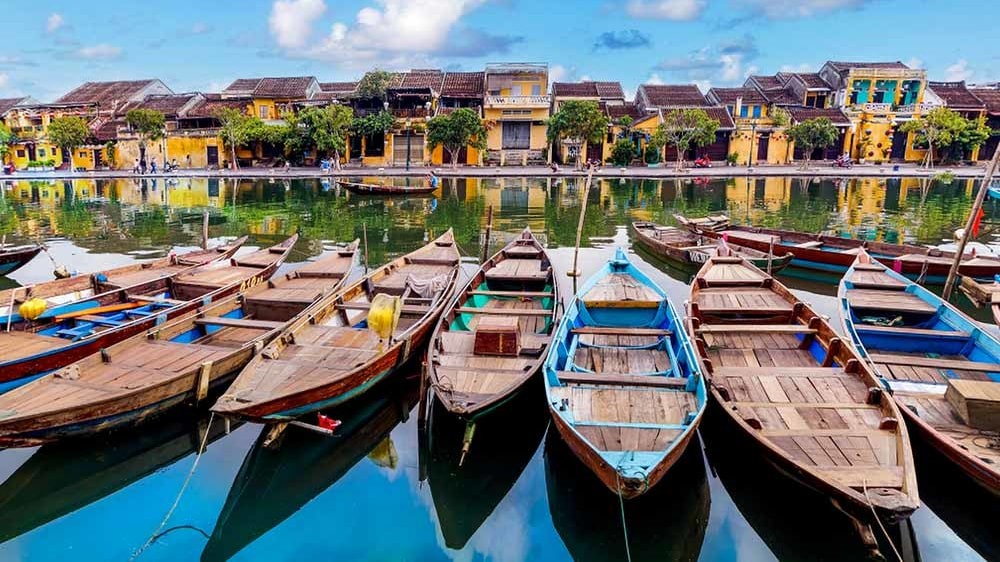Top 10 Best Stadiums In Britain
English football stadiums have a long history in sport, with many being considered the biggest in Europe. English football is renowned for its rich heritage and unique atmosphere, which stadiums play an important part of it. There are more than hundreds of stadiums across the country, so take a look at these best ones that you can visit, and watch the most awesome games here.
1. Ibrox Stadium (Rangers)
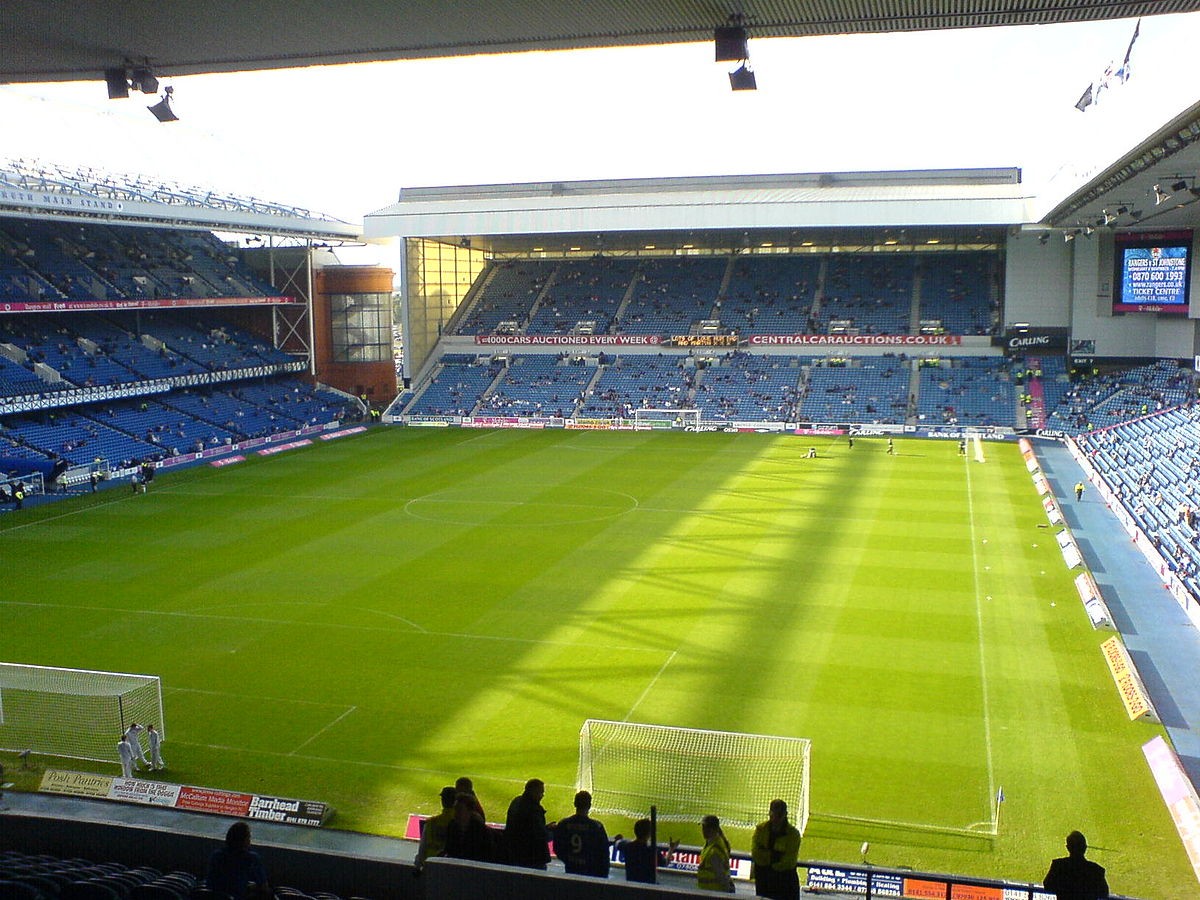 |
| Photo: Wikipedia |
Rangers FC moved to Ibrox in 1899, leaving behind the original Ibrox Stadium. The first match played at the stadium was a match versus Hearts on the 30th of December 1899. Ibrox was initially oval-shaped, had a track circling the pitch, and mainly consisted of wooden scaffold type terraces. In its first few months it got rapidly expanded to a capacity 75,000.
In 1902, Ibrox was awarded an international match between Scotland and England. However, 51 minutes in the match part of the wooden terraces collapsed and 26 people died. The incident led to the prohibition of wooden scaffold type terraces in favour of solid earth banking. The removal of the wooden scaffolding stands after the incident reduced capacity to 25,000, but the stands were quickly replaced by terraces with a base of earth banking.
Ibrox underwent its next major redevelopment in 1928 with the construction of the characteristic red-brick grandstand, designed by Archibald Leitch. The stadium could at that point hold more than 80,000 fans, but was further expanded in the 1930s by increasing the banking of the terraces
Ibrox achieved its record attendance in 1939 when 118,567 supporters visited the Old Firm match against Celtic. Few changes were made to the stadium in the decades that followed. Ibrox was again the site of a major stadium disaster in 1971. This time, 66 people were killed in a crush that happened at one of the exits after a game against Celtic. This resulted in the gradual conversion of the stadium into an all-seater, which started with the placement of benches in the North Stand.
Subsequent works included the construction of tree new stands, modelled on the rectangular shape of Dortmund’s Westfalenstadion. The first was the new Copland Road Stand, which opened in 1978, and which was followed by a new West Stand in 1979 and a new Govan Stand in 1981. The original Main Stand was the only one left standing.
Ibrox got further improved and expanded between 1990 and 1997 by a series of smaller extensions and the refurbishment of the main stand. The works were capped with the installation of two Jumbotron screens in the two remaining empty corners.
2. Celtic Park (Celtic)
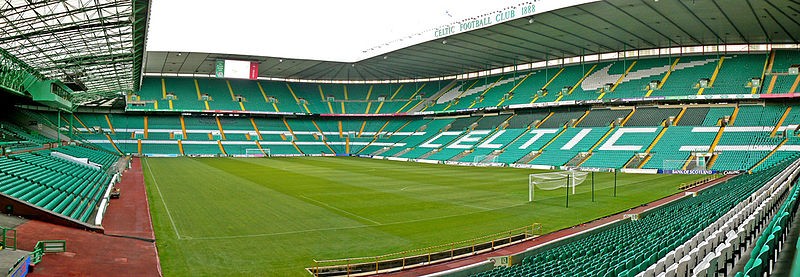 |
| Photo: Wikipedia |
Celtic Park is the home stadium of Celtic Football Club, in the Parkhead area of Glasgow, Scotland. With a capacity of 60,411, it is the largest football stadium in Scotland, and the eighth-largest stadium in the United Kingdom. It is also known as Parkhead or Paradise.
Celtic was formed in 1887 and the first Celtic Park opened in Parkhead in 1888. The club moved to the current site in 1892, after the rental charge was greatly increased on the first. The new site was developed into an oval-shaped stadium, with vast terracing sections. The record attendance of 83,500 was set at an Old Firm derby on 1 January 1938. The terraces were covered and floodlights installed between 1957 and 1971. The Taylor Report mandated that major clubs should have all-seater stadia by August 1994. Celtic was in a poor financial position in the early 1990s and no major work was carried out until Fergus McCann took control of the club in March 1994. The old terraces were demolished to develop a new stadium in a phased rebuild completed in August 1998. A section of rail seating was installed in 2016.
Celtic Park has been used as a venue for Scotland internationals and Cup Finals when Hampden Park has been unavailable. Before the First World War, Celtic Park hosted composite rules shinty-hurling, track and field and the 1897 Track Cycling World Championships. Open-air Masses and First World War recruitment drives were also held there. Celtic Park hosted the opening ceremony of the 2014 Commonwealth Games and has also been used for concerts by the Who and U2.
3. Anfield (Liverpool)
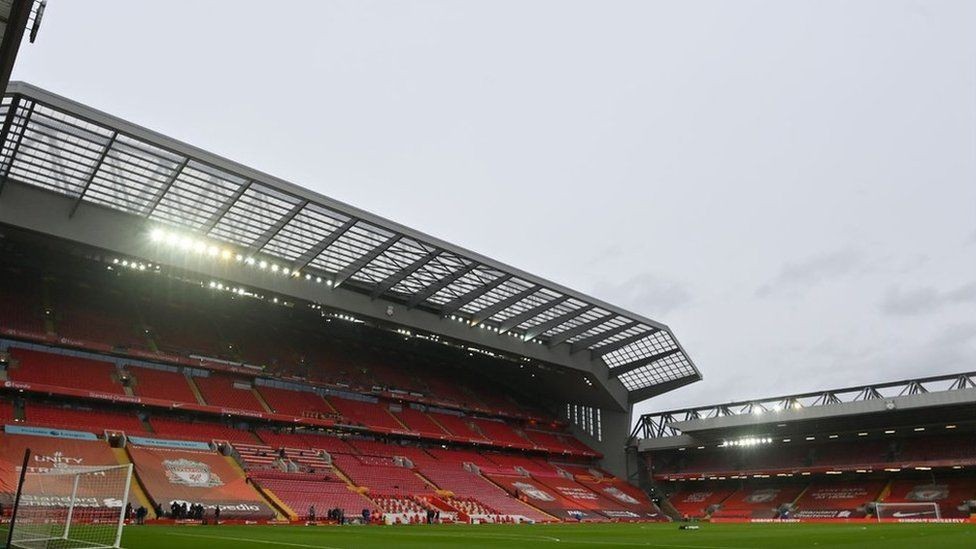 |
| Photo: BBC |
Anfield is a football stadium in Anfield, Liverpool, Merseyside, England, which has a seating capacity of 53,394, making it the seventh largest football stadium in England. It has been the home of Liverpool F.C. since their formation in 1892. It was originally the home of Everton from 1884 to 1891, before they moved to Goodison Park after a dispute with the club president.
The stadium has four stands: the Spion Kop, the Main Stand, the Sir Kenny Dalglish Stand and the Anfield Road End. The record attendance of 61,905 was set at a match between Liverpool and Wolverhampton Wanderers in 1952. The ground converted to an all-seater stadium in 1994 as a result of the Taylor Report, which reduced its capacity.
Construction for an extension to the main stand began on 8 December 2014. This extension, one of the largest all-seater single stands in European football, opened to the public on 9 September 2016, increasing the stadium capacity to 53,394. The Anfield Road Stand is currently being redeveloped to bring the stadium capacity to around 61,000. It is due to be completed in time for the 2023–24 season.
4. Craven Cottage (Fulham)
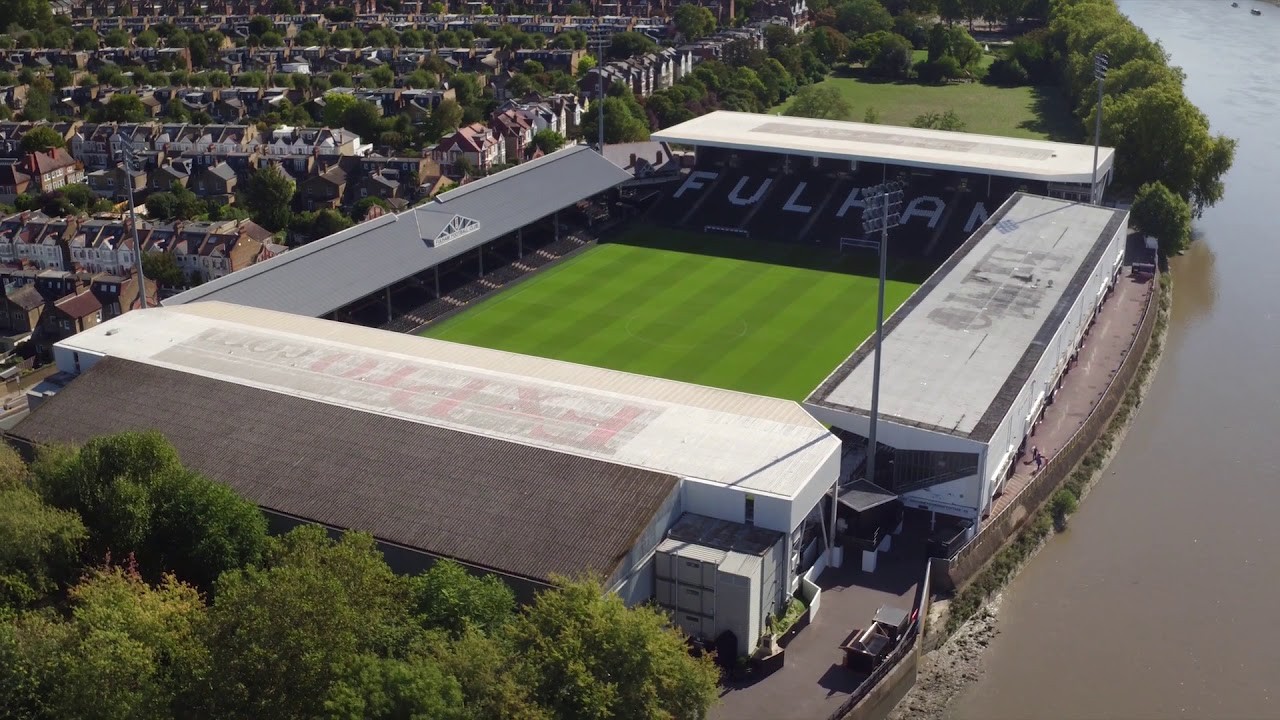 |
| Photo: BeanymanNews |
Craven Cottage is a football stadium located in Fulham, West London. It has been the home ground of Championship club Fulham since 1896. The ground's capacity is now 19,359, which happened with the closure of the Riverside Stand for redevelopment in the close season of 2019. The record attendance is 49,335, for a game against Millwall, 8 October 1938. Located next to Bishop's Park on the banks of the River Thames, 'Craven Cottage' was originally a royal hunting lodge and has history dating back over 300 years.
As well as by Fulham, the stadium has been also been used by the United States men's national football team, Australia national football team, the Republic of Ireland national football team (for a friendly match in 2012), and Canada men's national football team, and was formerly the home ground for rugby league team Fulham RLFC.
5. Old Trafford (Manchester United)
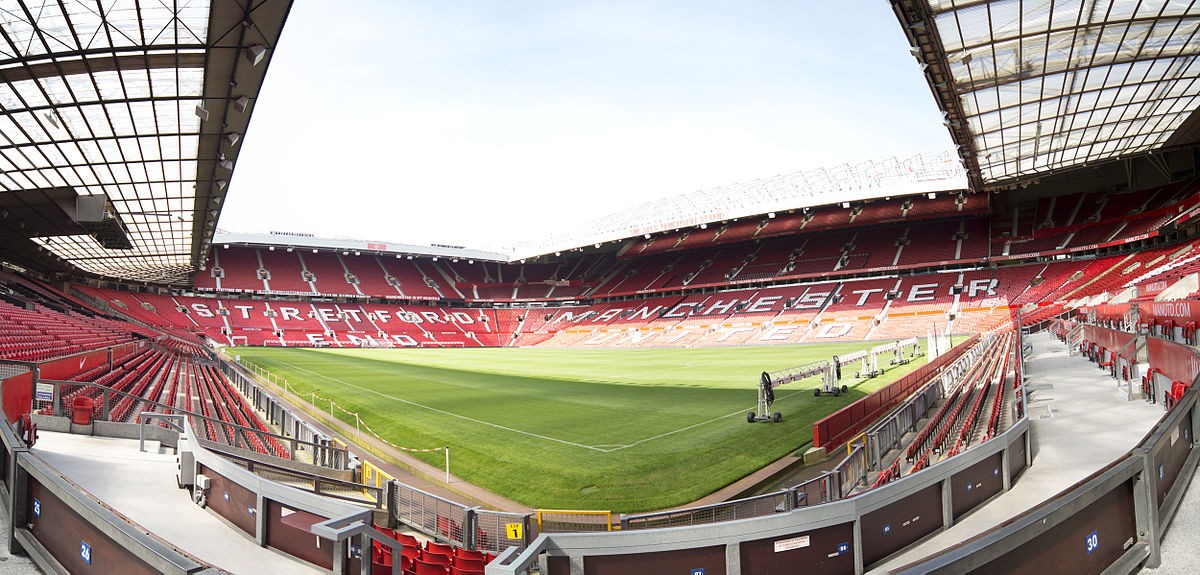 |
| Photo: Wikipedia |
Old Trafford is a football stadium in Old Trafford, Greater Manchester, England, and the home of Manchester United. With a capacity of 74,140 seats, it is the largest club football stadium (and second-largest football stadium overall after Wembley Stadium) in the United Kingdom, and the eleventh-largest in Europe. It is about 0.5 miles (800 m) from Old Trafford Cricket Ground and the adjacent tram stop.
Nicknamed "The Theatre of Dreams" by Bobby Charlton, Old Trafford has been United's home ground since 1910, although from 1941 to 1949 the club shared Maine Road with local rivals Manchester City as a result of Second World War bomb damage. Old Trafford underwent several expansions in the 1990s and 2000s, including the addition of extra tiers to the North, West and East Stands, almost returning the stadium to its original capacity of 80,000. Future expansion is likely to involve the addition of a second tier to the South Stand, which would raise the capacity to around 88,000. The stadium's record attendance was recorded in 1939, when 76,962 spectators watched the FA Cup semi-final between Wolverhampton Wanderers and Grimsby Town.
Old Trafford has hosted an FA Cup Final, two final replays and was regularly used as a neutral venue for the competition's semi-finals. It has also hosted England fixtures, matches at the 1966 World Cup, Euro 96 and the 2012 Summer Olympics, including women's international football for the first time in its history, and the 2003 Champions League Final. Outside football, it has been the venue for rugby league's annual Super League Grand Final every year except 2020, and the final of Rugby League World Cups in 2000 and 2013.
6. Villa Park (Aston Villa)
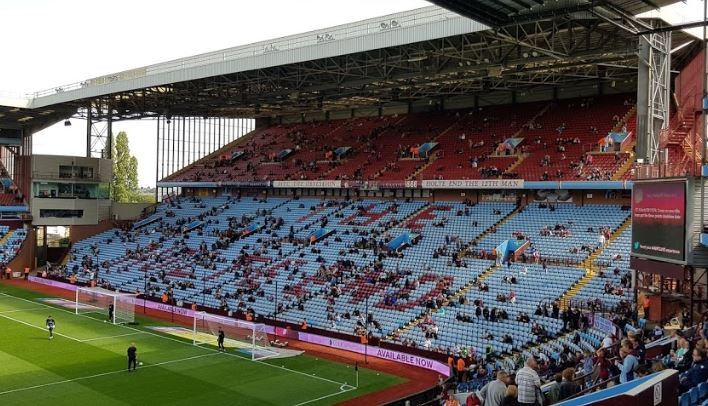 |
| Photo: Stadium Journey |
Villa Park is a football stadium in Aston, Birmingham, England, with a seating capacity of 42,749. It has been the home of Premier League side Aston Villa since 1897. The ground is less than a mile from both Witton and Aston railway stations and has hosted sixteen England internationals at senior level, the first in 1899 and the most recent in 2005. Villa Park has hosted 55 FA Cup semi-finals, more than any other stadium.
In 1897, Aston Villa moved into the Aston Lower Grounds, a sports ground in a Victorian amusement park in the former grounds of Aston Hall, a Jacobean stately home. The stadium has gone through various stages of renovation and development, resulting in the current stand configuration of the Holte End, Trinity Road Stand, North Stand and Doug Ellis Stand. The club has initial planning permission to redevelop the North Stand, which will increase the capacity of Villa Park from 42,785 to about 50,000.
Before 1914, a cycling track ran around the perimeter of the pitch where regular cycling meetings were hosted as well as athletic events. Aside from football-related uses, the stadium has seen various concerts staged along with other sporting events including boxing matches and international rugby league and rugby union matches. In 1999, the last final of the UEFA Cup Winners' Cup took place at Villa Park. Villa Park also hosted the 2012 FA Community Shield, as Wembley Stadium was in use for the final of the Olympic football tournament.
7. Tottenham Hotspur Stadium (Tottenham)
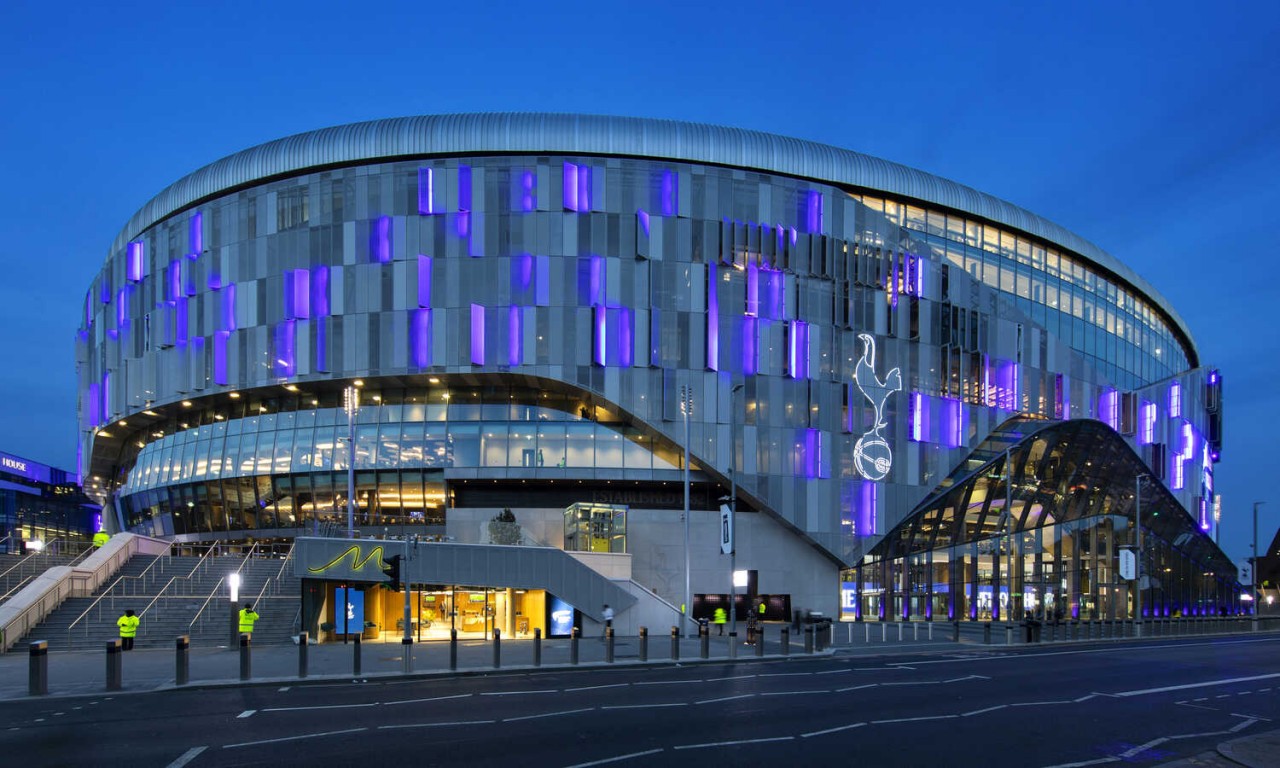 |
| Photo: Timeout |
The Tottenham Hotspur Stadium is the home of Premier League club Tottenham Hotspur in north London, replacing the club's previous stadium, White Hart Lane. With a seating capacity of 62,850, it is the third-largest football stadium in England and the largest club stadium in London. It is designed to be a multi-purpose stadium and features the world's first dividing, retractable football pitch, which reveals a synthetic turf field underneath for NFL London Games, concerts and other events.
The construction of the stadium was initiated as the centrepiece of the Northumberland Development Project, intended to be the catalyst for a 20-year regeneration plan for Tottenham. The project covers the site of the now demolished ground White Hart Lane and areas adjacent to it. The project was first conceived in 2007 and announced in 2008, but the plan was revised several times, and the construction of the stadium, beset by disputes and delays, did not commence until 2015. The stadium subsequently opened on 3 April 2019 with a ceremony before the first Premier League game held at the stadium.
8. St James’ Park (Newcastle United)
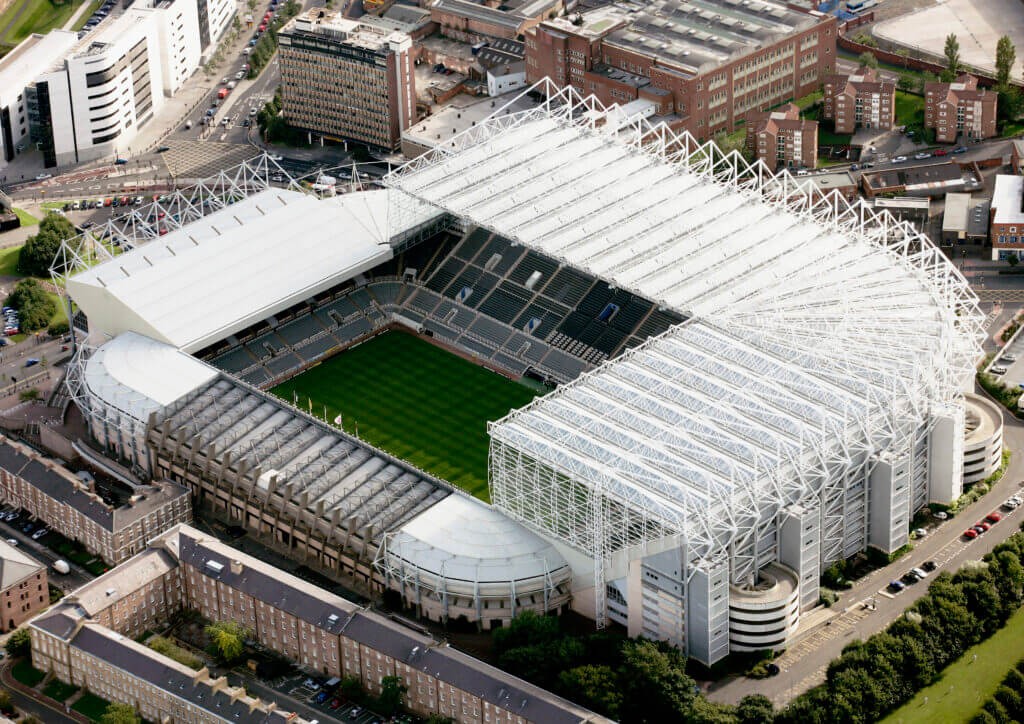 |
| Photo: The Atlantic |
St James' Park is a football stadium in Newcastle upon Tyne, England. It is the home of Premier League club Newcastle United F.C. With a seating capacity of 52,305 seats, it is the eighth largest football stadium in England.
St James' Park has been the home ground of Newcastle United since 1892 and has been used for football since 1880. Throughout its history, the desire for expansion has caused conflict with local residents and the local council. This has led to proposals to move at least twice in the late 1960s, and a controversial 1995 proposed move to nearby Leazes Park. Reluctance to move has led to the distinctive lop-sided appearance of the present-day stadium's asymmetrical stands.
Besides club football, St James' Park has also been used for international football, at the 2012 Olympics, for the rugby league Magic Weekend, rugby union World Cup, Premiership and England Test matches, charity football events, rock concerts, and as a set for film and reality television.
9. Tynecastle Park (Heart of Midlothian)
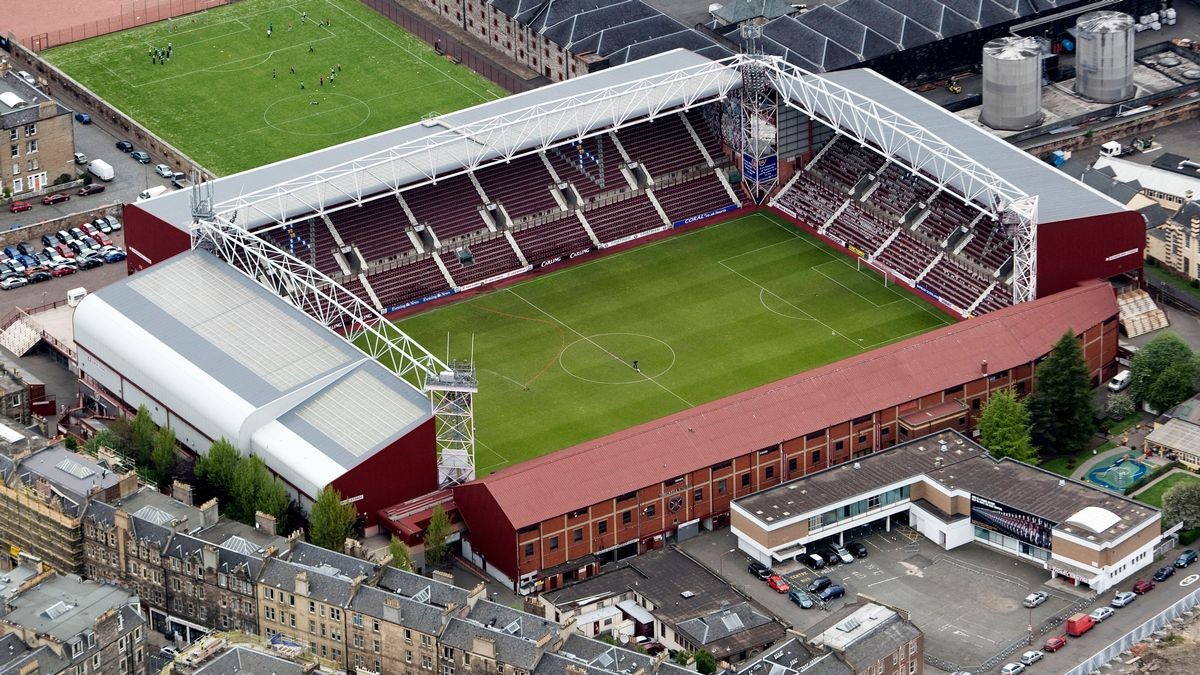 |
| Photo: Daily Record |
Tynecastle Park is a football stadium in the Gorgie area of Edinburgh, which is the home ground of Scottish Professional Football League club Heart of Midlothian (Hearts). It has also hosted Scotland international matches, and been used as a neutral venue for Scottish Cup and Scottish League Cup semi-finals. Tynecastle has a seating capacity of 19,852, which makes it the sixth-largest football stadium in Scotland. Hearts have played at the present site of Tynecastle since 1886.
Tynecastle is an all-seated stadium, split into four sections known as the Gorgie Stand, Main Stand, Wheatfield Stand and Roseburn Stand. The Main Stand was rebuilt in 2017, replacing an older facility designed by noted football stadium architect Archibald Leitch. The three other stands were constructed between 1994 and 1997, with all having a distinctive goalpost roof structure made out of steel tubes. Unusually, the framework sits at the front of each stand, which means that the support towers sit within 10 yards of the corner flag, forming an arch over the stand. The stadium floodlights sit on top of the support towers, angled down towards the pitch, like the lighting rigs used at concerts.
10. Wembley Stadium (England)
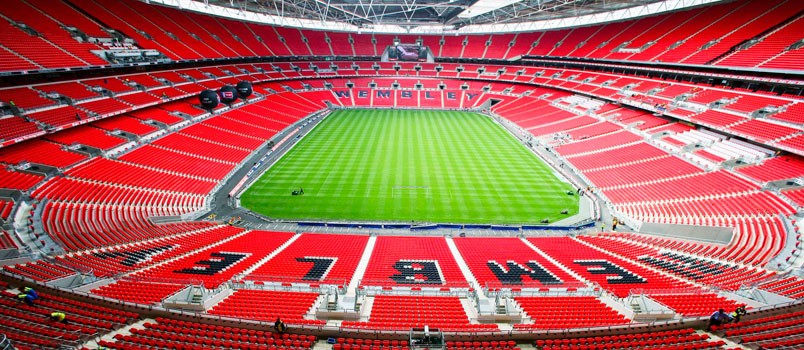 |
| Photo: Delaware North |
Wembley Stadium (branded as Wembley Stadium connected by EE for sponsorship reasons) is a football stadium in Wembley, London. It opened in 2007 on the site of the original Wembley Stadium, which was demolished from 2002 to 2003. The stadium hosts major football matches including home matches of the England national football team, and the FA Cup Final. Wembley Stadium is owned by the governing body of English football, the Football Association (the FA), whose headquarters are in the stadium, through its subsidiary Wembley National Stadium Ltd (WNSL). With 90,000 seats, it is the largest stadium in the UK and the second-largest stadium in Europe.
Designed by Populous and Foster and Partners, the stadium is crowned by the 134-metre-high (440 ft) Wembley Arch which serves aesthetically as a landmark across London as well as structurally, with the arch supporting over 75% of the entire roof load. The stadium was built by Australian firm Multiplex at a cost of £798 million (£1.22 billion today). Contrary to popular belief, Wembley Stadium does not have a retractable roof which covers the playing surface. Two partially retractable roof structures over the east and west ends of the stadium can be opened to allow sunlight and aid pitch growth.
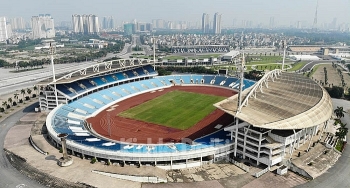 | Hanoi's stadium ranks fifth in top stadiums in Southeast Asia My Dinh Stadium in Hanoi has been listed in Southeast Asia's top 5 best stadiums by the Asian Football Federation (AFC). |
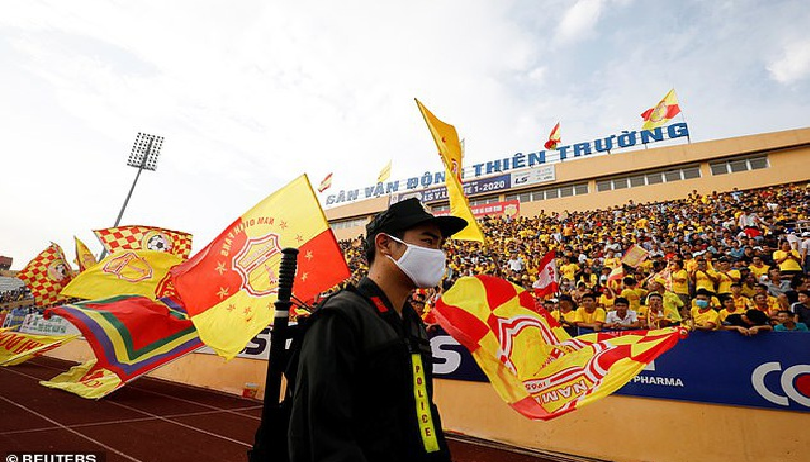 | Vietnam's football returning to crowded stadiums overwhelms British media Stadiums with packed audiences in V-League make British football fans “crave” amid COVID-19 pandemic |
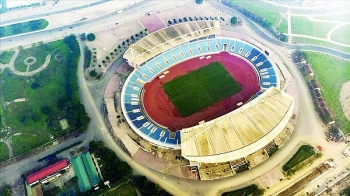 | My Dinh Stadium, a top 5 best stadiums in Southeast Asea My Dinh National Stadium in Hanoi, Vietnam was listed in the top 5 best stadiums in ASEAN by the Asian Football Confederation (AFC). |
Recommended
 World
World
Thailand Positions Itself As a Global Wellness Destination
 World
World
Indonesia Accelerates Procedures to Join OECD
 World
World
South Korea elects Lee Jae-myung president
 World
World
22nd Shangri-La Dialogue: Japan, Philippines boost defence cooperation
Popular article
 World
World
Pakistan NCRC report explores emerging child rights issues
 World
World
"India has right to defend herself against terror," says German Foreign Minister, endorses Op Sindoor
 World
World
‘We stand with India’: Japan, UAE back New Delhi over its global outreach against terror
 World
World






